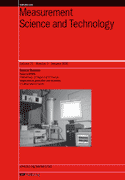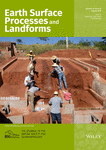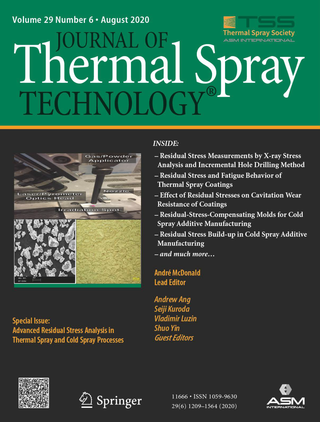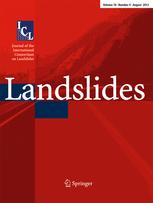
Isis is a quarterly peer-reviewed academic journal published by the University of Chicago Press. It covers the history of science, history of medicine, and the history of technology, as well as their cultural influences. It contains original research articles and extensive book reviews and review essays. Furthermore, sections devoted to one particular topic are published in each issue in open access. These sections consist of the Focus section, the Viewpoint section and the Second Look section.

Advances in Physics is a bimonthly scientific journal published by Taylor & Francis that was established in 1952. The journal is also issued as a supplement to the Philosophical Magazine. Peer review is determined on a case-by-case basis. The editors-in-chief are Paolo Radaelli and Joerg Schmalian.

Innovations in Systems and Software Engineering: A NASA Journal is a peer-reviewed scientific journal of computer science covering systems and software engineering, including formal methods. It is published by Springer Science+Business Media on behalf of NASA. The editors-in-chief are Michael Hinchey and Shawn Bohner.

Measurement Science and Technology is a monthly peer-reviewed scientific journal, published by IOP Publishing, covering the areas of measurement, instrumentation, and sensor technology in the sciences. The editor-in-chief is Andrew Yacoot.

Earth Surface Processes and Landforms is a peer-reviewed scientific journal published by John Wiley & Sons on behalf of the British Society for Geomorphology. It covers geomorphology and more in general all aspects of Earth sciences dealing with the Earth surface. The journal was established in 1976 as Earth Surface Processes, obtaining its current name in 1981. The journal primarily publishes original research papers. It also publishes Earth Surface Exchanges which include commentaries on issues of particular geomorphological interest, discussions of published papers, shorter journal articles suitable for rapid publication, and commissioned reviews on key aspects of geomorphological science. Foci include the physical geography of rivers, valleys, glaciers, mountains, hills, slopes, coasts, deserts, and estuary environments, along with research into Holocene, Pleistocene, or Quaternary science. The editor-in-chief is Stuart Lane.

Acta Astronautica is a monthly peer-reviewed scientific journal covering all fields of physical, engineering, life, and social sciences related to the peaceful scientific exploration of space. The journal is widely known as one of the top aerospace engineering journals. The journal was established in 1955 under the name Astronautica Acta, obtaining its current title in 1974, with volume-numbering simultaneously restarting at 1. The journal is published by Elsevier, sponsored by the International Academy of Astronautics.

Data & Knowledge Engineering is a monthly peer-reviewed academic journal in the area of database systems and knowledge base systems. It is published by Elsevier and was established in 1985. The editor-in-chief is P.P. Chen.

The Journal of Thermal Spray Technology is a peer-reviewed scientific journal that is dedicated to thermal science and its application for the improvement of material properties and functionality of coatings. The journal regularly publishes review papers and special issues. it is published by Springer Science+Business Media on behalf of ASM International. The editor-in-chief is Armelle Vardelle.
The International Journal of Mobile and Blended Learning is a quarterly peer-reviewed academic journal which focuses on educational technology, specifically on theoretical, technical, and pedagogical aspects of learning in mobile and blended environments. It is the official journal of the International Association for Mobile Learning and is published on their behalf by IGI Global. The journal was established in 2009 by David Parsons, who remains the editor-in-chief. Annual collections of papers from the journal are published as a series of edited books.
Computers in Entertainment was an online academic journal and magazine that featured both peer-reviewed articles as well as news content covering entertainment technology, products, services, and notable people. The editor-in-chief was Newton Lee and the journal was published from 2003 to 2018 by the Association for Computing Machinery. From 2009 to 2011, Adrian David Cheok and Masa Inakage were co-editors-in-chief together with Lee.
The Journal of Guidance, Control, and Dynamics is a monthly peer-reviewed scientific journal published by the American Institute of Aeronautics and Astronautics. It covers the science and technology of guidance, control, and dynamics of flight. The editor-in-chief is Ping Lu. It was established in 1978 as Journal of Guidance and Control, obtaining its current title in 1982.
The Journal of Propulsion and Power is a bimonthly peer-reviewed scientific journal covering research on aerospace propulsion and power. The editor-in-chief is Joseph M. Powers. It is published by the American Institute of Aeronautics and Astronautics and was established in 1985.
Combustion Theory and Modelling is a bimonthly peer-reviewed scientific journal covering research on combustion. The editors-in-chief are Moshe Matalon and Mitchell D. Smooke. It is published by Taylor & Francis and was established in 1997. The founding editors are John W. Dold and Mitchell D. Smooke.

Landslides is a monthly peer-reviewed scientific journal covering research on all aspects of landslides. The topics covered by the journal range from landslide identification and monitoring, remote sensing, laboratory and field testing, to risk assessment and mitigation. It was established in 2004 as the official journal of the International Consortium on Landslides and is published by Springer Science+Business Media. The editor-in-chief is Kyoji Sassa.

Numerical Methods for Partial Differential Equations is a bimonthly peer-reviewed scientific journal covering the development and analysis of new methods for the numerical solution of partial differential equations. It was established in 1985 and is published by John Wiley & Sons. The editors-in-chief are George F. Pinder and John R. Whiteman.

The International Journal of Environmental Science and Technology is a monthly peer reviewed scientific journal covering environmental science, technology, engineering, and management. It was established in 2004 and is published by Springer Science+Business Media. The editor-in-chief is Madjid Abbaspour.

The Journal of Spacecraft and Rockets is a bi-monthly peer-reviewed scientific journal published by the American Institute of Aeronautics and Astronautics. It covers the science and technology of spaceflight, satellite and mission design, missile design, and rockets. The editor-in-chief is Olivier de Weck. It was established in 1964.
IEEE Photonics Technology Letters is a semi-monthly peer-reviewed scientific journal which focuses on the theory, design, fabrication, and performance of lasers and optical devices as well as optical fibre technologies. It is published by the IEEE Photonics Society and was established in 1989. The editor-in-chief is Boon S. Ooi.

ACS Energy Letters is a monthly peer-reviewed scientific journal published by the American Chemical Society. It was established in 2016 and the editor-in-chief is Prashant V. Kamat. It covers research on all aspects of energy and aims for rapid publication.
Pure and Applied Geophysics is a monthly peer-reviewed scientific journal that covers research in the field of geophysics. It is published by Birkhäuser and the editors-in-chief are Carla F. Braitenberg, Alexander B. Rabinovich, and Renata Dmowska. The journal was established in 1939 as Geofisica Pura e Applicata before obtaining its current title in 1964.












